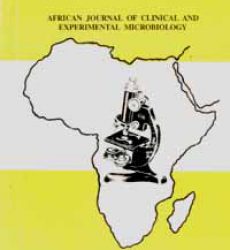Abstract
CD4 lymphocyte cells are the primary targets of Human immune-deficiency virus (HIV). Enumeration of CD4 T lymphocytes in the peripheral blood is used in the assessment of disease clinical stage, risk of opportunistic infections, evaluation of prognosis and guide decision on the commencement of antiretroviral therapy. The objective was to determine CD4 cells profile of HIV sero-positive naïve patients in Kogi State University Teaching Hospital( KSUTH) Anyigba. A total of 404 HIV sero-positive Highly Active Anti Retro Viral Treatment ( HAART) naïve patients comprising 147(36.4%) males and 257 (63.6%) females were examined. Approval was obtained from ethical committee of Kogi State University Teaching Hospital (KSUTH), Anyigba. Written and verbal informed consent was taken from all patients. The overall mean age of patients was 33.0 ± 12.7 years and female-male ratio was 1.7:1. Majority of patients were in the clinical stage two 121(30.5%) and three 200(50.4%). Patients had overall mean CD4 cells count of 381.8 ± 240.8 cells /mm3. Patients CD4 cells count varied statistically with the HIV clinical staging (F =4.512 & P value=0.004) and statistically insignificant with gender (P value = 0.7562 & t Test= 0.3106) and tuberculosis status (P value=0.223 & F= 1.505).Conclusion: This study showed HIV sero-positive HAART naive patients presented in KSUTH with mean age of 33 years. Majority of patients presented in disease clinical stage two and three with a mean CD4 cells counts of 381.8 cells/mm3 . This study recommend the need to reduce stigmatization, discrimination and promote early access to treatment , care and support services.
Keywords: HIV/AIDS, CD4, Patient/clients, KSUTH, Nigeria.
Download full journal in PDF below

